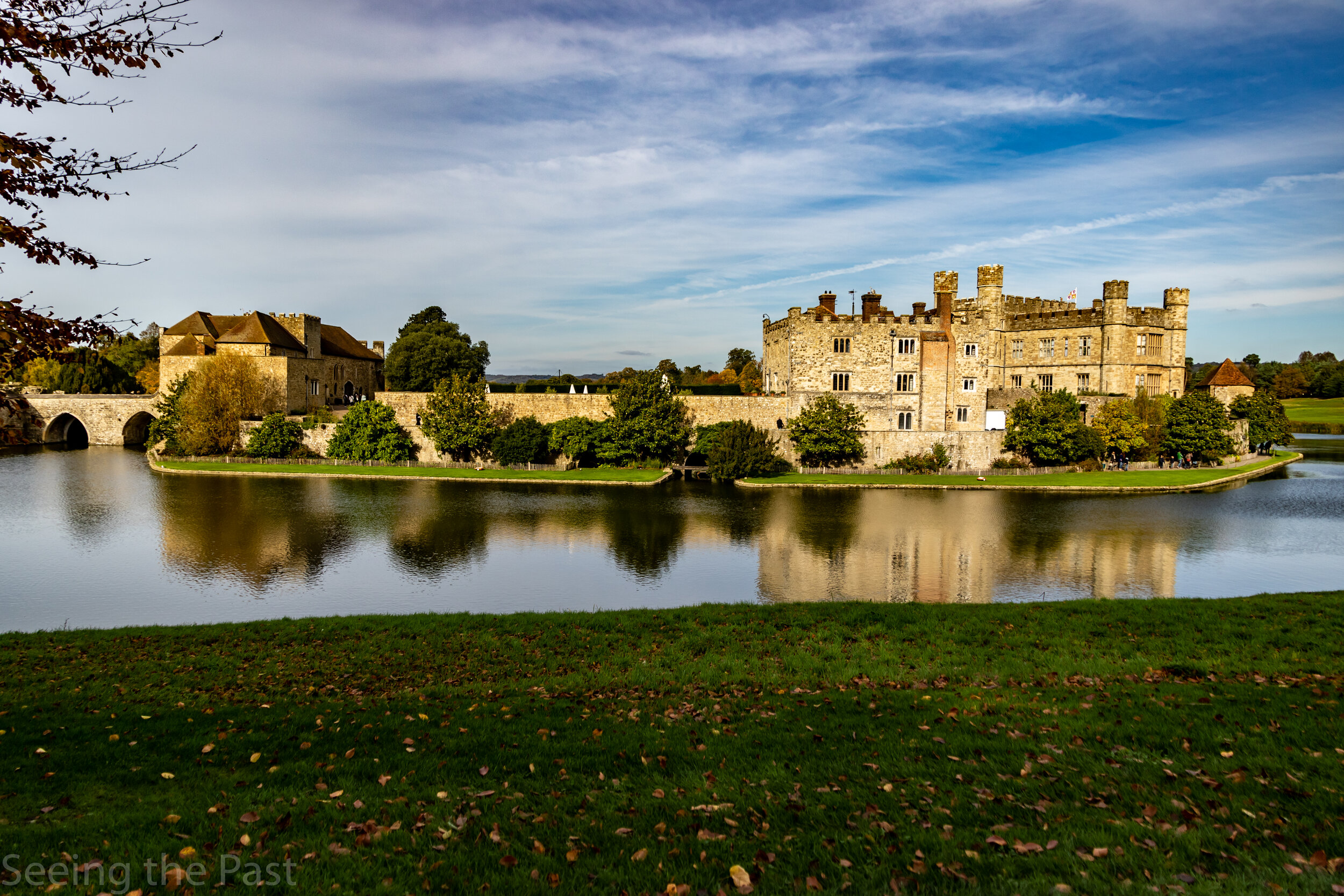Leeds Castle; "On an autumnal evening, when the bracken is golden and a faint blue mist among the trees, the loveliest castle in the whole world!". These are the words of Lord Conway in the popular magazine, magazine, “Country Life”. A visit to this beautiful but much altered castle is a great day out. This castle has links and associated features to many amazing stories from English history and is set in the exquisite kent countryside, often called, “the garden of England”. It is an experience not to be missed. Even the ramble from the car park to the castle is an attractive walk . Leeds is a unique castle in that it is associated six royal queens, people often overlooked in a male dominated world and should be high on every History lover’s lists of places to visit. It has links to the medieval world of the Plantagenets and that of Henry VIII. When he took possession of it, he transformed the castle from a fortified stronghold to a magnificent royal palace, fit for a mighty Tudor king and his first wife, Catherine of Aragon. You can have fun looking for Henry’s and Catherine’s symbols which have been left behind for posterity.
Read More






















